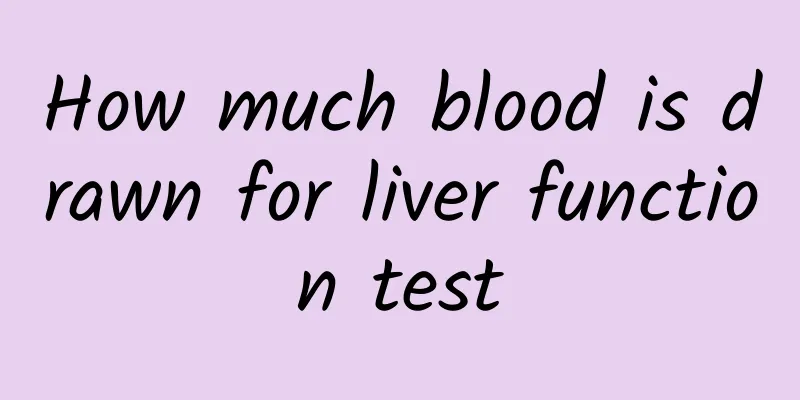Iron poisoning symptoms

|
Many friends need to supplement their blood because of anemia. We know that eating more foods containing iron can effectively supplement the blood, so iron-containing foods are very popular among people. However, we should also know that iron supplementation should be appropriate. If too much iron is supplemented, iron poisoning is likely to occur. In this case, not only will we be unable to treat anemia, but it will also cause harm to the body. We need to understand some of the symptoms of iron poisoning so that we can stop iron supplementation in time when some symptoms appear in the body and find appropriate methods to treat iron poisoning. So what are the symptoms of iron poisoning? 1. Skin pigmentation 90% to 100% of patients have skin pigmentation. The characteristic metallic or slate-grey colour, sometimes described as bronze or dark brown, is due to increased melanin (causing the bronze colour) and iron deposits (causing the grey pigment) deposited in the dermis. The skin is dry, the surface is smooth, thinning, and has poor elasticity, and the hair is sparse and falling out. Pigmentation is usually systemic but may be more obvious on exposed skin, underarms, vulva, nipples, scars, etc. There is also pigmentation on the oral mucosa and gums. The distribution of pigmentation is similar to that in chronic adrenal insufficiency. 2. Secondary diabetes It occurs in 50% to 80% of patients and is more likely to occur in patients with a family history of diabetes. Those with mild damage in the early stage may not have typical symptoms, while those with severe damage to the pancreatic islets in the middle and late stages may have typical symptoms. Late complications are the same as those due to other causes of diabetes. If not treated in time, acute metabolic complications such as ketoacidosis and non-ketotic hyperosmolar diabetic coma may occur. In the past, it was believed that destruction of pancreatic B cells was the main cause of diabetes. However, in recent years, it has been found that the insulin concentration in the blood of some patients has not decreased significantly. Therefore, some people believe that iron has a direct antagonistic effect on insulin, which can reduce the utilization of glucose by peripheral tissues, thereby leading to increased blood sugar and diabetes. Treatment is similar to that for other forms of diabetes, but patients with HC more often have significant insulin resistance. 3. Liver disease It is the most common clinical manifestation of HHC. Hepatomegaly may precede symptoms or abnormal liver function and may occur in more than 90% of symptomatic patients, some of whom have little laboratory evidence of liver damage. Mild elevation of transaminase is seen in 30% to 50% of patients, and transaminase returns to normal after bloodletting. In the late stage, liver function decline and portal hypertension appear. In severe cases, upper gastrointestinal bleeding and hepatic coma may occur. The occurrence of portal hypertension and esophageal varices is less common than cirrhosis caused by other reasons. Among patients with long-term cirrhosis of HHC, 14% (10% to 30%) develop cancer, which is higher than any other type of cirrhosis and often appears as a late sequelae; most tumors are multifocal and may have metastasized when symptoms appear. Splenomegaly is present in approximately half of symptomatic patients. 4. Heart disease Congestive heart failure is common, occurring in about 10% of young patients, particularly those with juvenile hemochromatosis. Symptoms of congestive heart failure may develop suddenly and progress rapidly to death if untreated. The heart is diffusely enlarged and may be misdiagnosed as idiopathic cardiomyopathy if there are no other obvious clinical manifestations. Arrhythmias, angina pectoris, and myocardial infarction are relatively rare. Arrhythmias include supraventricular premature beats, paroxysmal tachyarrhythmias, atrial flutter, atrial fibrillation, atrioventricular block, and ventricular fibrillation. 5. Endocrine gland dysfunction The most common manifestation is hypogonadism, which may precede other clinical symptoms. Symptoms in men include impotence, loss of libido, testicular atrophy, oligospermia, infertility, and male breast development; symptoms in women include irregular and sparse menstruation, amenorrhea, infertility, and loss of body hair. The above changes are mainly due to the reduction in gonadotropin production caused by iron deposition damaging the hypothalamic-pituitary function. Anterior pituitary and adrenal insufficiency, hypothyroidism, and hypoparathyroidism may also occur. Children who develop the disease may have growth and development disorders, and in severe cases may even suffer from dwarfism. 6. Joint disease Joint lesions occur in 25% to 50% of patients, usually after age 50, but may be the first clinical manifestation or occur long after treatment. The hand joints, especially the 2nd and 3rd metacarpophalangeal joints, are usually affected first, followed by the wrist, hip, ankle, and knee joints. When joints are affected, arthritis symptoms appear, such as joint pain, lack of mobility, stiffness, etc., but there is no redness, swelling or deformity. 7. Other clinical manifestations When there is a pancreatic exocrine disorder, symptoms similar to chronic pancreatitis such as indigestion, steatorrhea, and upper abdominal pain and discomfort may occur. Erythropoiesis was normal, and there was no anemia. Hematological abnormalities are uncommon. Patients' ability to resist infection is generally reduced, making them more susceptible to bacterial infections such as pneumonia, sepsis, and peritonitis. In the above article, we introduced that when treating anemia, we must supplement iron in moderation and not indiscriminately, otherwise iron poisoning will occur. Iron poisoning can easily lead to endocrine gland dysfunction, heart disease, secondary diabetes and skin pigmentation. The above article introduces the symptoms of iron poisoning in detail.
|
>>: Can soaking your feet in vinegar cure athlete's foot?
Recommend
How to reduce swelling quickly after tooth extraction
The health of teeth is related to people’s choice...
What is hypoosmolarity encephalopathy and what causes it?
Hypotonic encephalopathy (HE) is a group of clini...
What are whiteheads?
Whiteheads, also known as closed comedones, are a...
Benign prostatic hyperplasia
With the continuous improvement of modernization,...
How does Traditional Chinese Medicine treat hypothyroidism?
Hypothyroidism and hyperthyroidism are actually o...
What are the reasons for high tsh values?
TSH stands for thyroid stimulating hormone, which...
The dangers of ear bone clips
In daily life, girls have a lot of enthusiasm for...
Ingredients of Shiquan Dabu Pills
Detailed instructions for using Quan Da Bu Wan! S...
Precautions for tetanus injection and the time of tetanus injection
Tetanus shot is a measure currently taken by many...
Less tongue coating
There will be a little bit of tongue coating on p...
What are the types of gene mutations?
Gene mutation is an irreversible behavior and has...
What is genital herpes? What are the symptoms? How to classify?
Genital herpes is caused by infection with a herp...
What are the symptoms of nasopharyngitis and how to prevent and treat it
Nasopharyngitis is an ear and nose disease that m...
Feeling of weakness in the bones
Recently I heard a friend say that he often felt ...
What medicine should I take for stomach colic and diarrhea?
In recent years, people's living standards ha...









